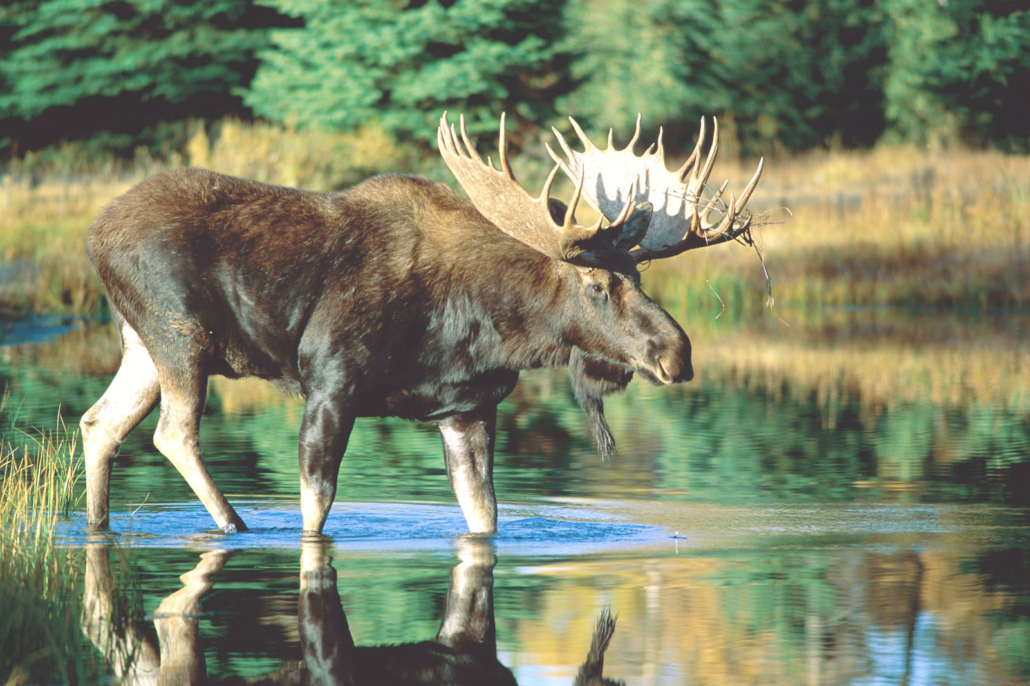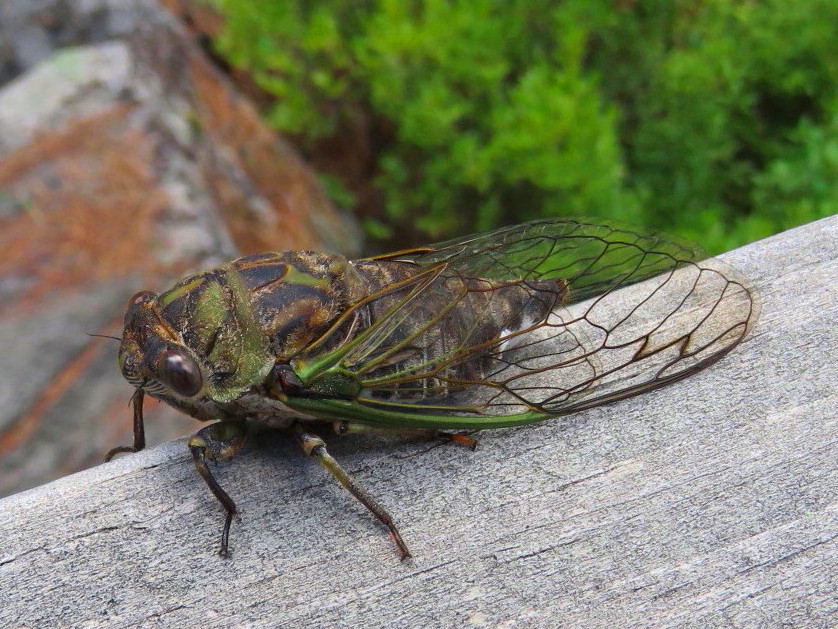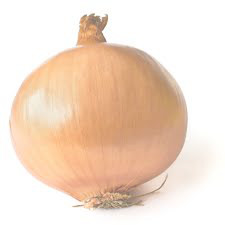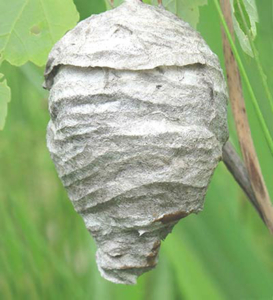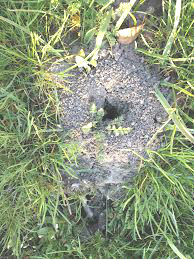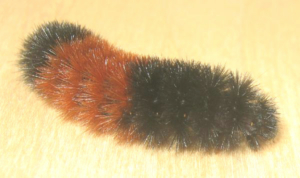SCORES & OUTDOORS – Opossum in my space: now it’s become personal
 by Roland D. Hallee
by Roland D. Hallee
It has now become personal.
Over the past 25 years, or so, I have written two columns on the opossum. Mainly because one had been sighted in Winslow, and I have seen a few dead alongside of the highway as a result of collisions with automobiles.
My first encounter with an opossum was in 1967 while living on Long Island, in New York. There was a stockade fence between the property where I was living and the neighbor, and I found it laying, “playing ‘possum,” along the fence.
I never really gave them much thought.
Until last week, when my neighbor from across the street informed me that on two occasions, in the evening. she had seen two, what seemed to be juvenile, opossum coming in and out of the small depression on the front walkway under the steps. A quick investigation revealed nothing.
Since then, I have not seen footprints in the snow, nor have my surveillance cameras picked up any activity, although the cameras are not pointed toward the ground. It is, however, worth my scrutiny.
The opossum, Didelphis virginiana, is a marsupial endemic to the Americas. The largest order of marsupials in the Western Hemisphere, it comprises 103 or more species in 19 genera. Opossums originated in South America and entered North America in the Great American Interchange following the connection of the two continents. Their unspecialized biology, flexible diet, and reproductive habits make them successful colonizers and survivors in diverse locations and conditions.
In the United States and Canada, the only species found is the Virginia opossum, and it is generally referred to as a ‘possum.
The word “opossum” is borrowed from the Powhatan language and was first recorded between 1607 and 1611 by John Smith (as opassom) and William Strachey (as aposoum). Both men encountered the language at the British settlement of Jamestown, Virginia, which Smith helped to found and where Strachey later served as its first secretary. Strachey’s notes describe the opossum as a “beast in bigness of a pig and in taste alike,” while Smith recorded it “hath an head like a swine … tail like a rat … of the bigness of a cat.” The Powhatan word ultimately derives from a Proto-Algonquian word meaning “white dog or dog-like beast.”
Opossums are usually solitary and nomadic, staying in one area as long as food and water are easily available. Some families will group together in ready-made burrows or even under houses. Though they will temporarily occupy abandoned burrows, they do not dig or put much effort into building their own. As nocturnal animals, they favor dark, secure areas. These areas may be below ground or above.
When threatened or harmed, they will “play possum,” mimicking the appearance and smell of a sick or dead animal. This physiological response is involuntary (like fainting), rather than a conscious act. In the case of baby opossums, however, the brain does not always react this way at the appropriate moment, and therefore they often fail to “play dead” when threatened.
When an opossum is “playing possum,” the animal’s lips are drawn back, the teeth are bared, saliva foams around the mouth, the eyes close or half-close, and a foul-smelling fluid is secreted from the anal glands. The stiff, curled body can be poked at, turned over, and even carried away without reaction. The animal will typically regain consciousness after a period of a few minutes to four hours, a process that begins with slight twitching of the ears.
Some species of opossums have prehensile tails, although dangling by the tail is more common among juveniles. An opossum may also use its tail as a brace and a fifth limb when climbing. The tail is occasionally used as a grip to carry bunches of leaves or bedding materials to the nest. A mother will sometimes carry her young upon her back, where they will cling tightly even when she is climbing or running.
Threatened opossums (especially males) will growl deeply, raising their pitch as the threat becomes more urgent. Males make a clicking “smack” noise out of the side of their mouths as they wander in search of a mate, and females will sometimes repeat the sound in return. When separated or distressed, baby opossums will make a sneezing noise to signal their mother. The mother in return makes the clicking sound and waits for the baby to find her. If threatened, the baby will open its mouth and quietly hiss until the threat is gone.
Opossums eat dead animals, insects, rodents and birds. They also feed on eggs, frogs, plants, fruits and grain. One source notes their need for high amounts of calcium. Thus possums eat the skeletal remains of rodents and roadkill animals. Opossums also eat dog food, cat food and human food waste. Opossums are also notable for their ability to clean themselves of ticks, which they then eat. Some estimates suggest they can eliminate up to 5,000 ticks in a season.
With this in mind, if I do have opossum living under my steps, it would be nice if I could capture them and relocate them at camp where they would be very useful in controlling the tick population. They’d also probably put on some weight.
The Virginia opossum lives in regions as far north as Canada and as far south as Central America. The Virginia opossum can often be found in wooded areas, though its habitat may vary widely. Opossums have been moving north in recent years.
The Virginia opossum was once widely hunted and consumed in the United States. Opossum farms have been operated in the United States in the past. Sweet potatoes were eaten together with the possum in America’s southern area. South Carolina cuisine includes opossum, and President Jimmy Carter hunted opossums in addition to other small game. Raccoon, opossum, partridges, prairie hen, and frogs were among the fare Mark Twain recorded as part of American cuisine.
Opossum oil (possum grease) is high in essential fatty acids and has been used as a chest rub and a carrier for arthritis remedies given as topical salves.
Opossum pelts have long been part of the fur trade.
So, I will be watching closely to see if I, indeed, have opossum living with me. With winter settling in, it’s not possible for me to move those stairs at this time.
Roland’s trivia question of the week:
How many times has MLB pitcher Nolan Ryan’s jersey number been retired?


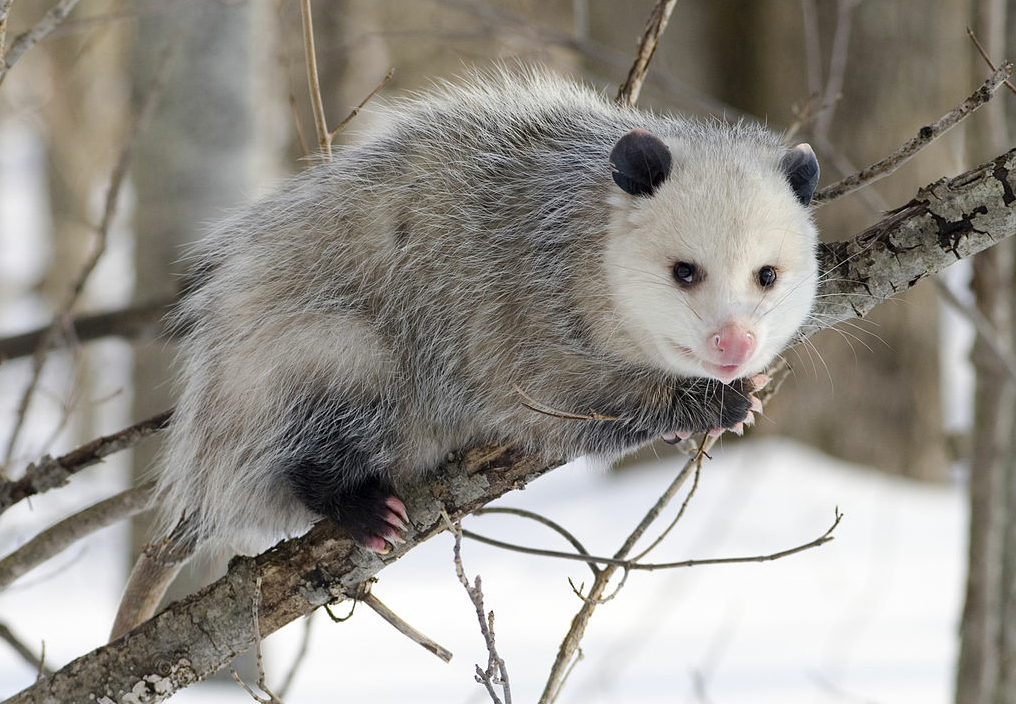
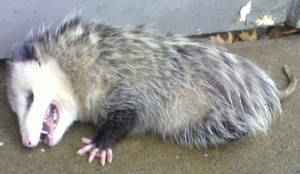
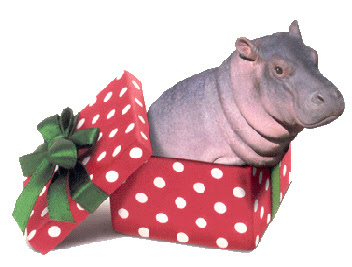

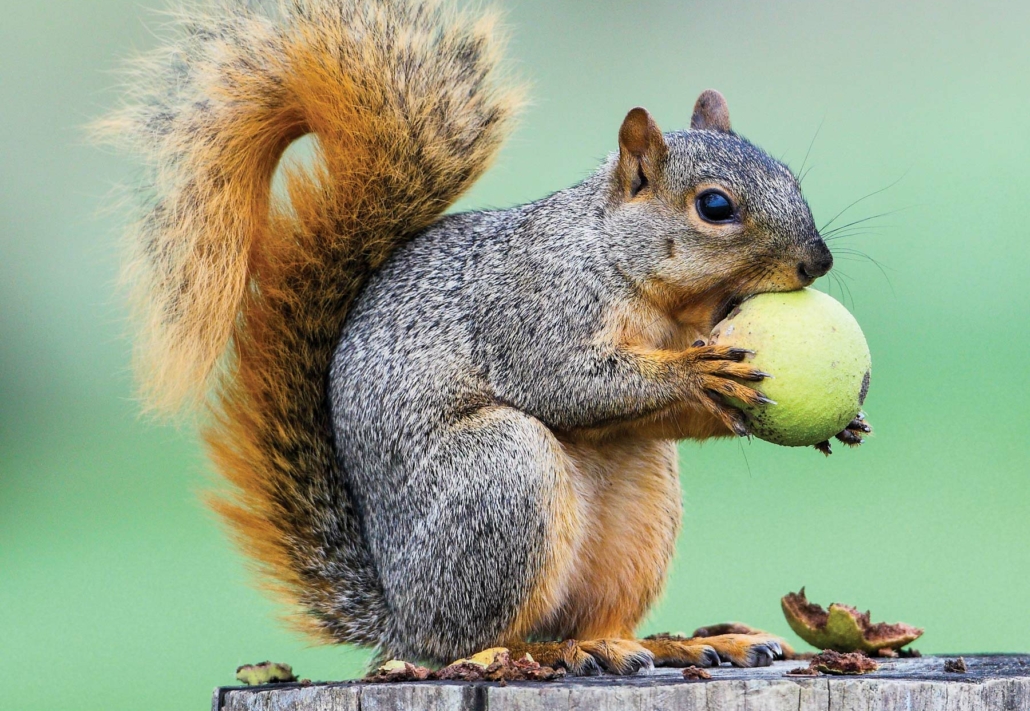
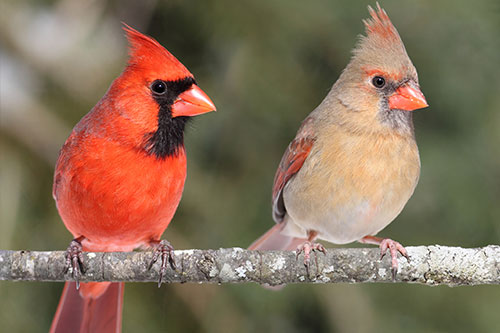
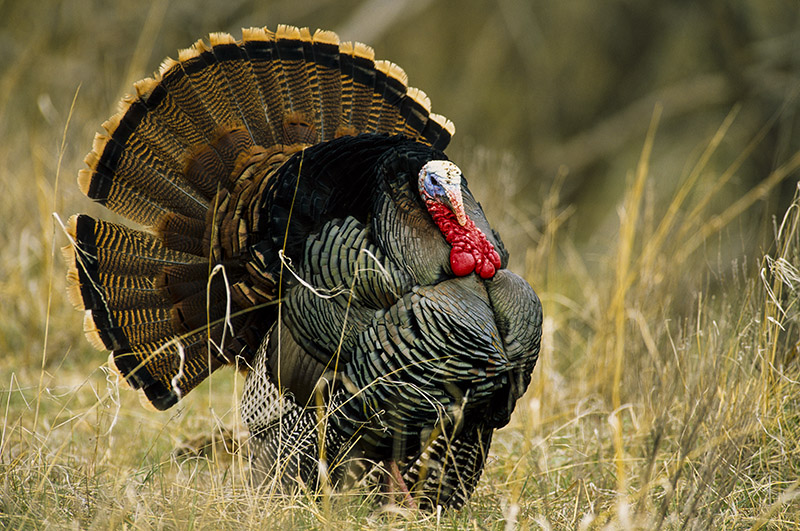

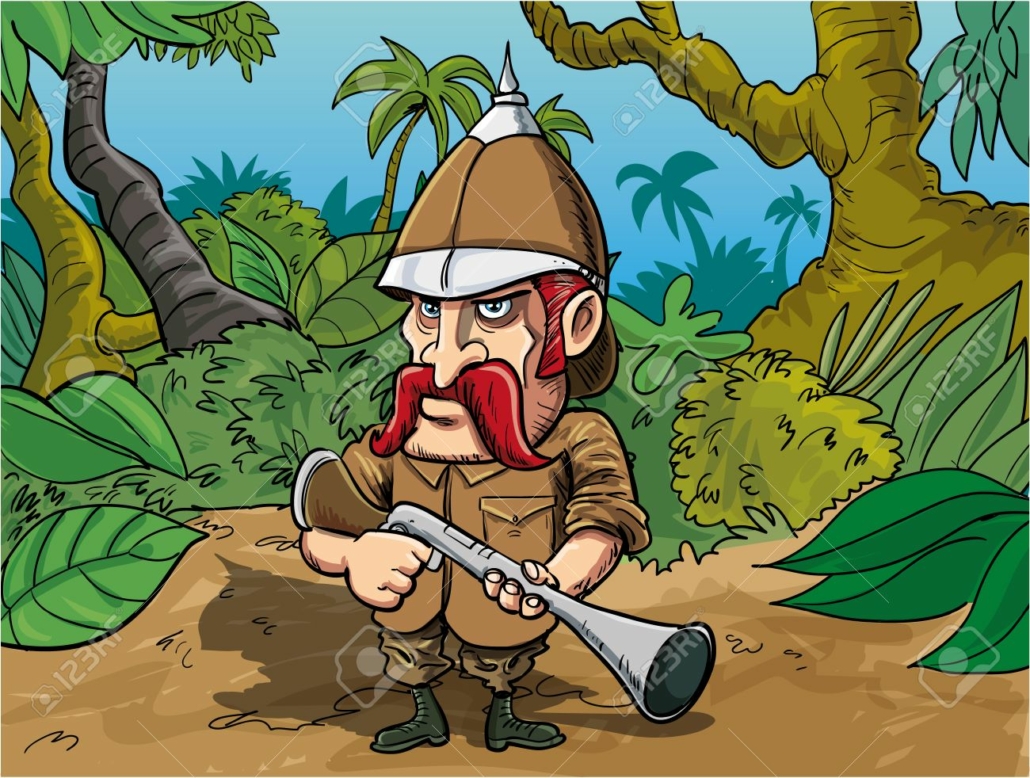
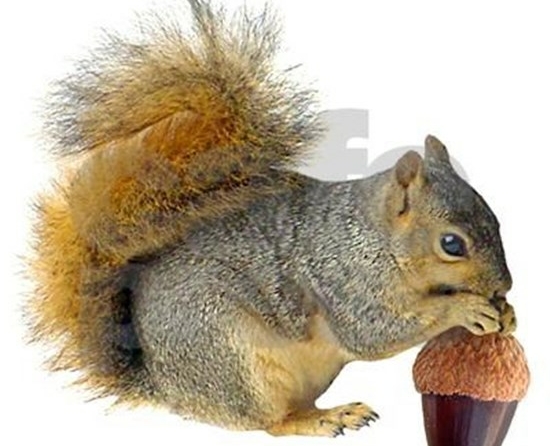 Noisy, plentiful acorns; obscure beech nuts
Noisy, plentiful acorns; obscure beech nuts